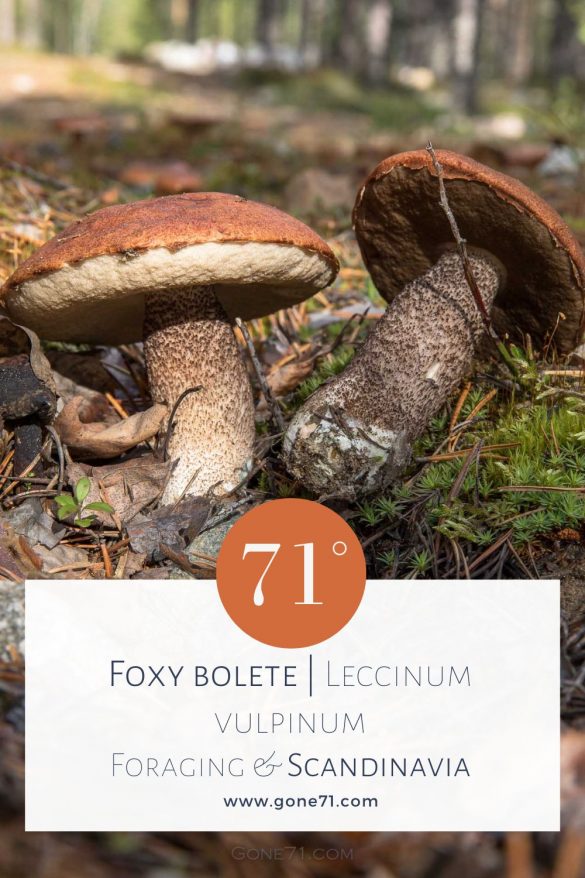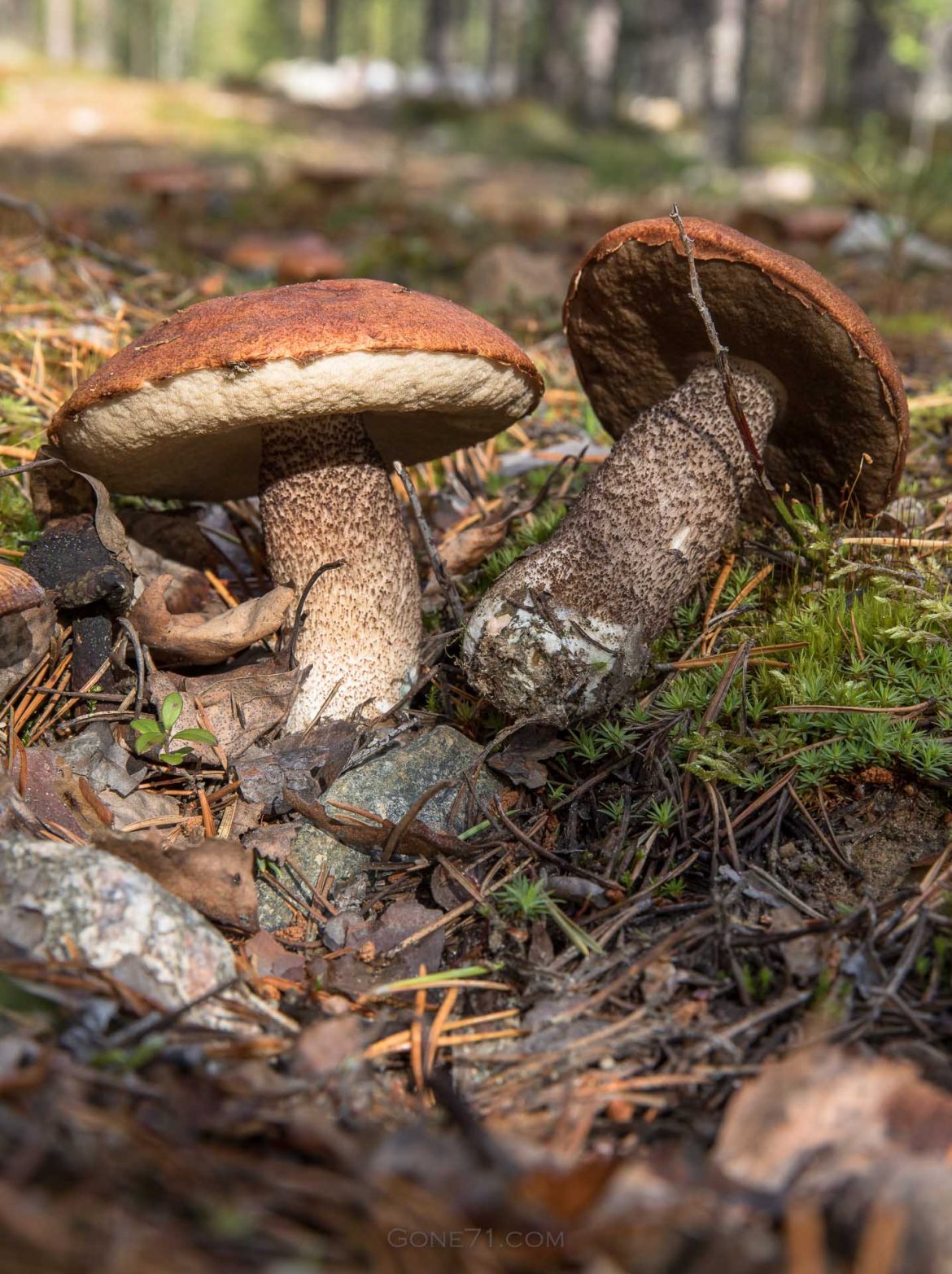swe.: Tallsopp | nor.: Furuskrubb | fin.: Männynpunikkitatti | dt.: Fuchsrotkappe, Kiefernrotkappe
Orange boletes were anchored in the minds of several generations by the children’s book author Otfried Preussler (The Robber Hotzenplotz) as a particularly tasty dish. A good choice in our opinion!
The foxy bolete or orange pine bolete is an other form of the orange bolete that shares most of its characteristics with the orange birch bolete.
The most distinct features are a slightly darker cap and a lighter
trunk with light or redish scales. In contrast to its birch affine
relative, this mushroom has a symbiotic relationship with pine and also blue berry shrubs.
Older specimens often have a cap diameter up to 20 cm, in rare cases even more. The white, firm flesh of young mushrooms becomes softer with age, which means that large specimens are usually no longer suitable for consumption.
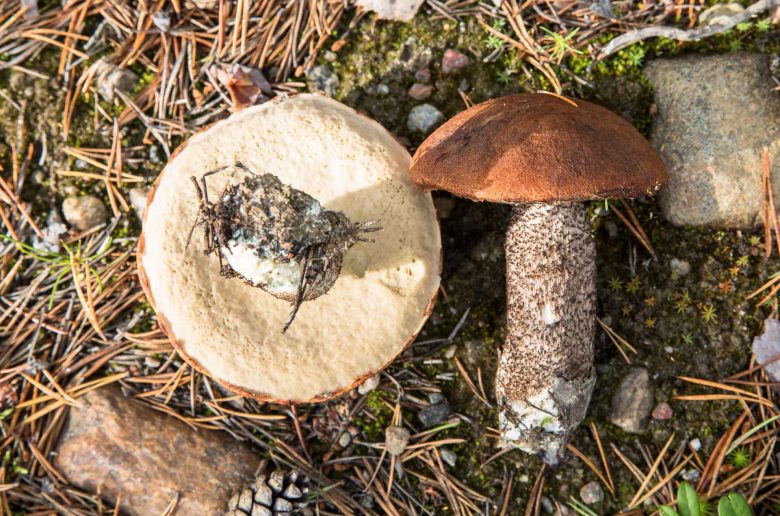
height: 6 – 20 cm
cap diameter: 4 – 18 cm
trunk diameter: 1 – 4 cm
months: June – October
colours: orange cap | white trunk (red-orange scales)
habitat: pine, bilberry
smell: mild, pleasant
consumption: cooked
Appearance & habitat of the foxy bolete
The foxy bolete is a close relative to the brown birch bolete and yet an other member of the orange boletes featuring an orange cap. There are several different species in the Leccinum family like the very common orange birch bolete (Leccinum versipelle) and the red-capped scaber stalk (Leccinum aurantiacum). Orange boletes are considered much tastier than their brown relatives.
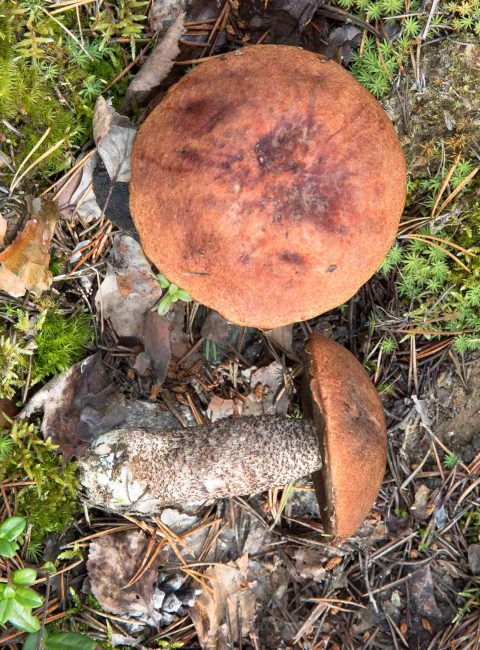
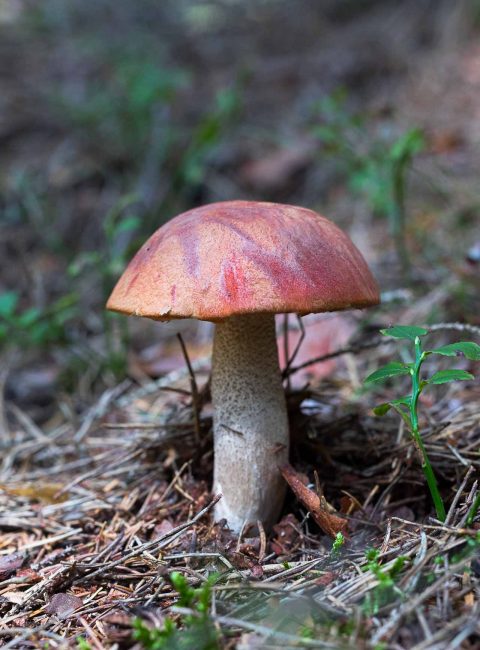
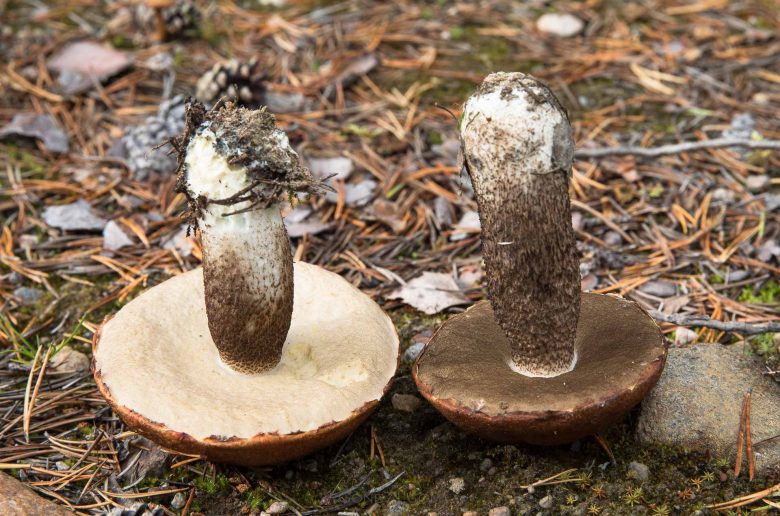
Appearance
When young the mushroom features a firm white stem with orange scales. In older specimen the scales darker and more red-grey. The pores are also much lighter in younger specimen and have a yellow-greyish colour. The pores can become very dark in old specimen. These colour variations of the scales and pores are one distinguishing feature to the orange birch bolete.
After cutting, the flesh turns pink to brown. Like all orange boletes foxy boletes turn black upon cooking. Like all members of the Leccinum family it is considered slightly toxic if consumed raw so proper cooking (15 minutes plus) is required. However, they make for a tasty meal. Like all orange boletes they are very mild in taste and can be used along with other mushrooms like chantarelles in sauces, soups or fried.
Types of orange boletes
- Oak bolete (Leccinum quercinum): stalk scales reddish, reddish brown, flesh: white, turning pink-grey-violet when cut. (Oaks, rarely beeches and other deciduous trees). In appearance very similar to the Red-capped scaber stalk and often described as the same species.
- Red-capped scaber stalk (Leccinum aurantiacum): scales on stalks orange-brown, flesh: white, turning grey-purple to grey-black when cut. (aspens, poplars)
- Orange spruce bolete (Leccinum piceinum): stalk scales black | Flesh: White, turning bluish-purple when cut. (spruce, blueberries)
- Foxy bolete (Leccinum vulpinum): stalk scales reddish brown, flesh: turning pink to brown when cut. (pines, pines)
- Orange birch bolete (Leccinum versipelle): scales on stalk are grey or black | white flesh turning black when cut. probably the most common orange bolete, especially in Scandinavia.
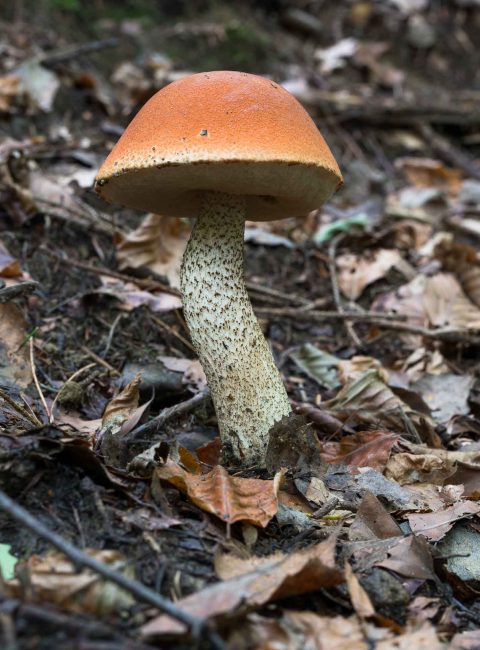

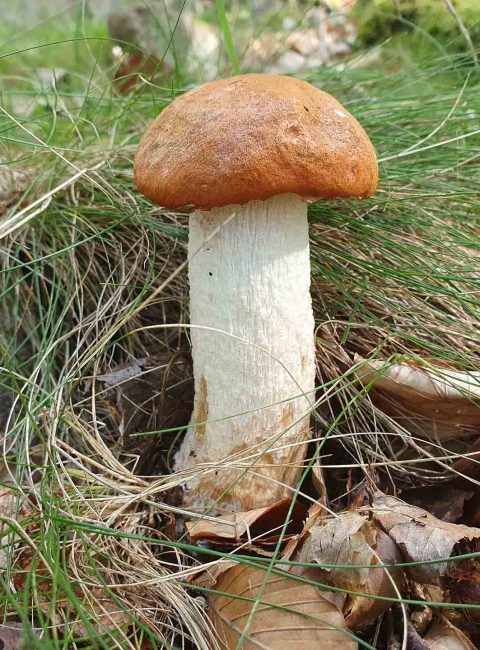
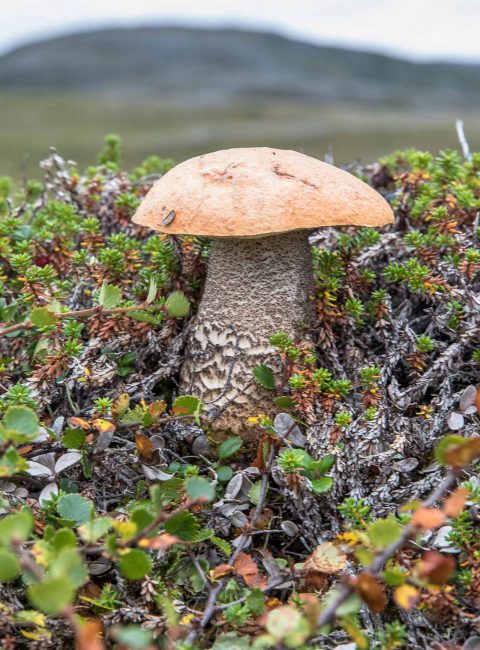
The different types of orange boletes are considered equal in taste. Depending on where you live in the world, one or the other species might be dominant.
As the name suggests, these are species whose symbiotic partnerships are attributed to different trees. Visually, the species differ quite a bit from each other and individual specimens are best identified by the color of the scales and the overall appearance.
Lookalikes
Foxy boletes are easily identifiable fungi that are most likely to be confused with other orange boletes (edible) or scabber stalks such as the common birch bolete (Leccinum scabrum) or the orange birch bolete (Leccinum versipelle).
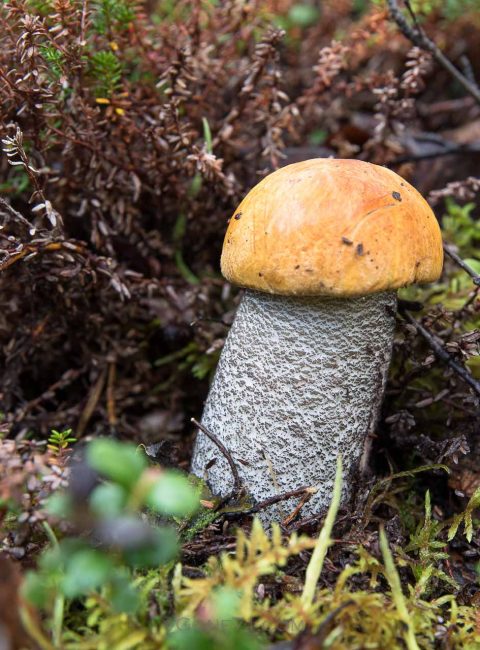
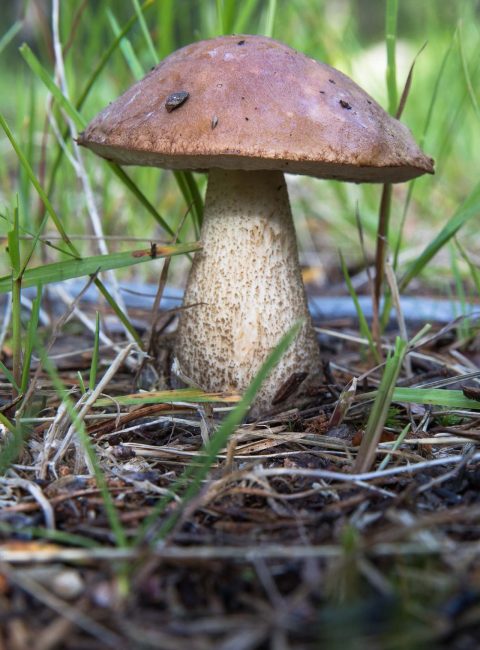
Orange boletes in the kitchen
Their firm consistency and mild flavor make them an excellent mushroom to use in the kitchen. We love them fried, but their firm flesh is also great in soups or sauces.
All orange boletes are excellent edible mushrooms. For recipes and further information on kitchen use and cleaning see the recipe section @ Orange birch bolete | Leccinum versipelle
Like all mushrooms from the genus Leccinum they are not suitable for consumption raw and are slightly poisonous. Many mushroom books give a minimum cooking time of 15 minutes.
We have compiled this overview with the best of knowledge and belief, but do not claim to be complete and reserve the right to make errors.
Learn more about poisonous mushrooms and mushroom poisons here
↓↓↓
Find some inspiration in other mushroom recipes
↓↓↓
